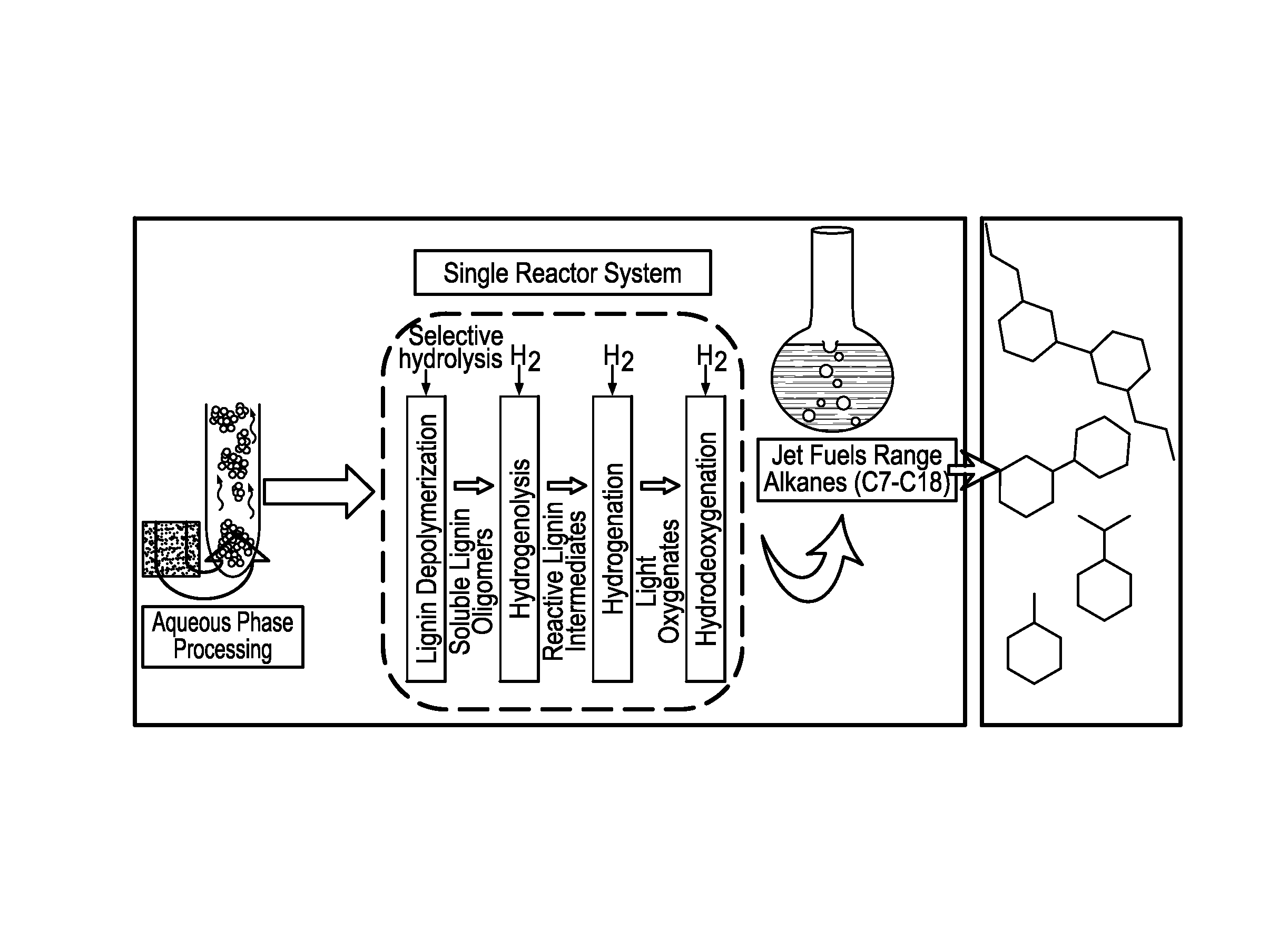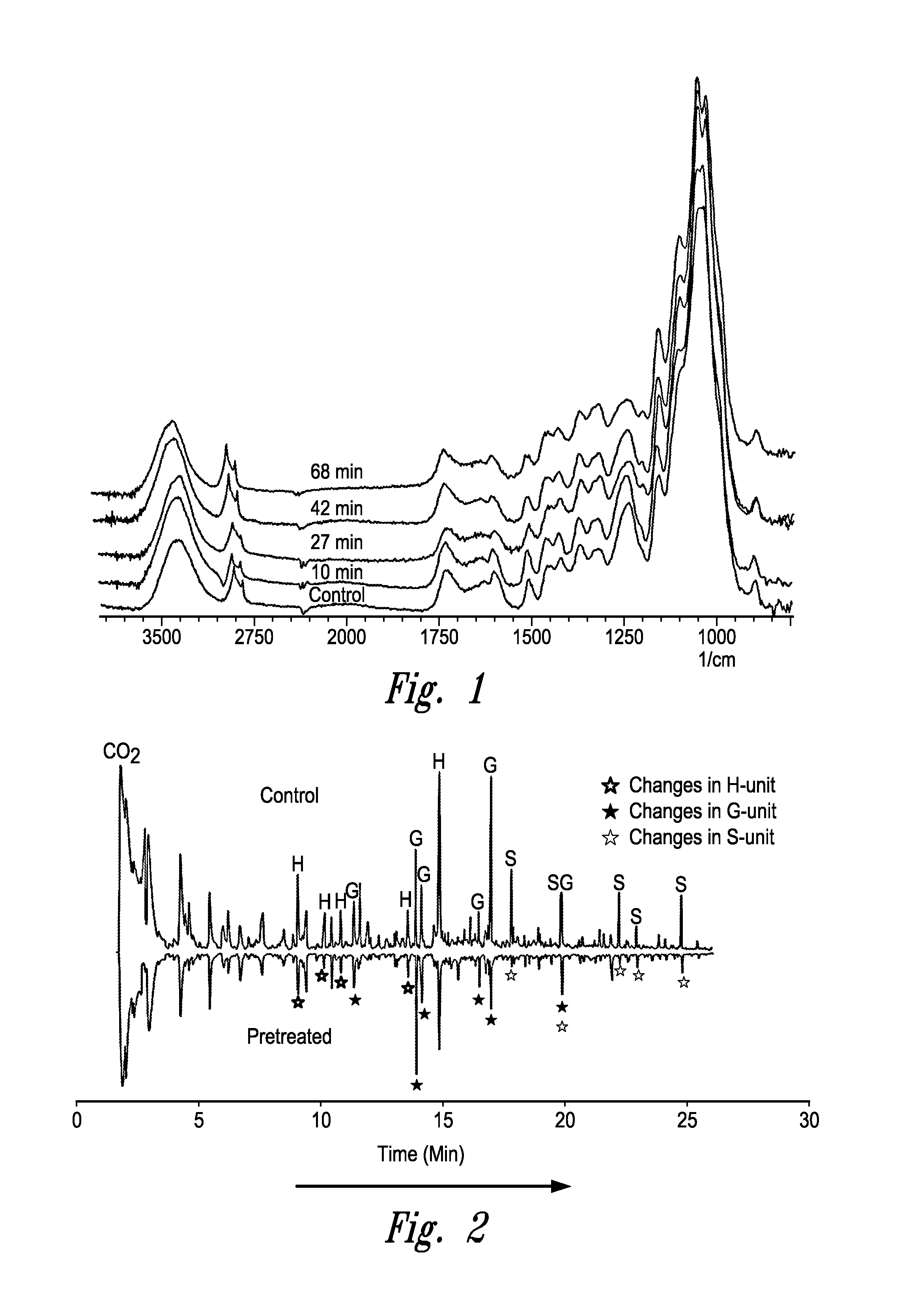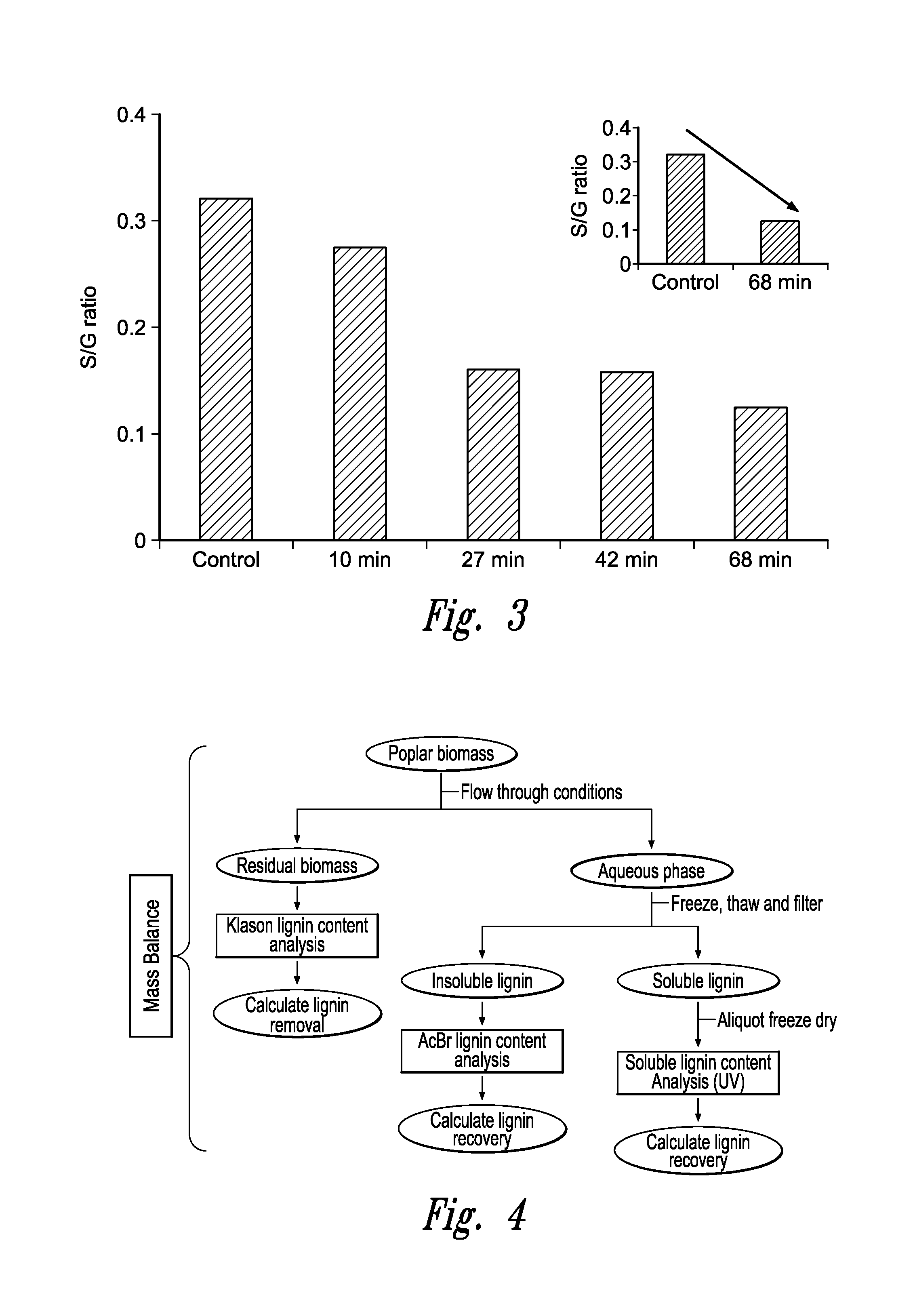Apparatus and process for preparing reactive lignin with high yield from plant biomass for production of fuels and chemicals
a technology of reactive lignin and plant biomass, which is applied in the field of reactive lignin preparation, can solve the problems of limited market for lignin products, lignin has received little attention relative to cellulose in terms of r&d efforts to biofuel production, and approximately 2% of the lignin available from the pulp and paper industry is used commercially, so as to improve lignin recovery and high yield
- Summary
- Abstract
- Description
- Claims
- Application Information
AI Technical Summary
Benefits of technology
Problems solved by technology
Method used
Image
Examples
example 1
Corn Stover Lignin was Solubilized and Recovered in High Yield Using Aqueous Phase Depolymerization Using a Flowthrough Reactor
[0086]Overview.
[0087]This example describes an inventive flowthrough treatment that removed a much larger fraction of original lignin than ever reported in the prior art using batch process methods. According to particular aspects, the surprising and superior results are explained by the flow of hot water to remove the lignin as well as the hemicellulose during the reaction, and acid released into the hot water also enhanced their removal. In prior art batch reactions, addition of minute amount of acid (for example 0.05% H2SO4) further accelerated the lignin reactions to insoluble compounds, whereas in the inventive flowthrough reactions, the dissolved or suspended lignin was swept from the reactor before it significantly reacts and precipitates with acid, resulting in substantially more lignin removal.
Materials and Methods
[0088]Flow Reactors.
[0089]The flow ...
example 2
Soluble and Insoluble Lignin from Miscanthus, Switchgrass and Poplar Lignin was Isolated and Recovered in High Yield Using Aqueous Phase Depolymerization Using a Flowthrough Reactor
[0096]Overview.
[0097]This Example describes lignin solubilization and recovery using the inventive Aqueous Phase Depolymerization; isolation of soluble and insoluble lignin from Miscanthus, Switchgrass and Poplar.
Materials and Methods
[0098]Miscanthus and Switchgrass Samples.[0099]Loading: 1 g Miscanthus and Switchgrass;[0100]Flow rate: 10 ml / min distilled water;[0101]Pressure & temperature: 100 psi at 160° C. and 155 psi at 180° C.;[0102]Time: 10, 27 and 60 min for 160° C. and 7, 35 and 56 min for 180° C.
[0103]Poplar Samples (at Log R0 ˜5)[0104]Loading: 1 g Poplar sieves;[0105]Flow rate: 10 ml / min distilled water;[0106]Temperature & time: A severity parameter was used at different combinations of temperature and time under water-only flowthrough conditions for efficient solubilization and depolymerization...
example 3
Lignin Removal and Recovery from Poplar, Under Various Severity Parameters for Flowthrough Conditions with or without Additives (e.g. 0.05% H2SO4), and Determination of Purity of the Recovered Lignin was Achieved
[0117]Overview.
[0118]This Example describes data for lignin removal under various severity parameters (Eqn. 1 above) for poplar samples pretreated by flowthrough pretreatment with water-only or with 0.05% H2SO4, and provides additional insight into how lignins in their native form are recovered in aqueous phase (FIG. 4). FIG. 4 shows, according to particular aspects, a representative scheme for lignin removal / recovery and analysis from poplar samples.
[0119]Lignin Recovery; Comparison of Water-Only and 0.05% H2SO4 Conditions.
[0120]Tables 2 and 3 illustrate the different conditions utilized for lignin recovery during flowthrough pretreatment of poplar with water-only and 0.05% H2SO4 at 25 ml / min flow rate.
[0121]
TABLE 2Water-only flowthrough pretreatment conditions forlignin re...
PUM
| Property | Measurement | Unit |
|---|---|---|
| temperature | aaaaa | aaaaa |
| temperature | aaaaa | aaaaa |
| temperature | aaaaa | aaaaa |
Abstract
Description
Claims
Application Information
 Login to View More
Login to View More - R&D
- Intellectual Property
- Life Sciences
- Materials
- Tech Scout
- Unparalleled Data Quality
- Higher Quality Content
- 60% Fewer Hallucinations
Browse by: Latest US Patents, China's latest patents, Technical Efficacy Thesaurus, Application Domain, Technology Topic, Popular Technical Reports.
© 2025 PatSnap. All rights reserved.Legal|Privacy policy|Modern Slavery Act Transparency Statement|Sitemap|About US| Contact US: help@patsnap.com



